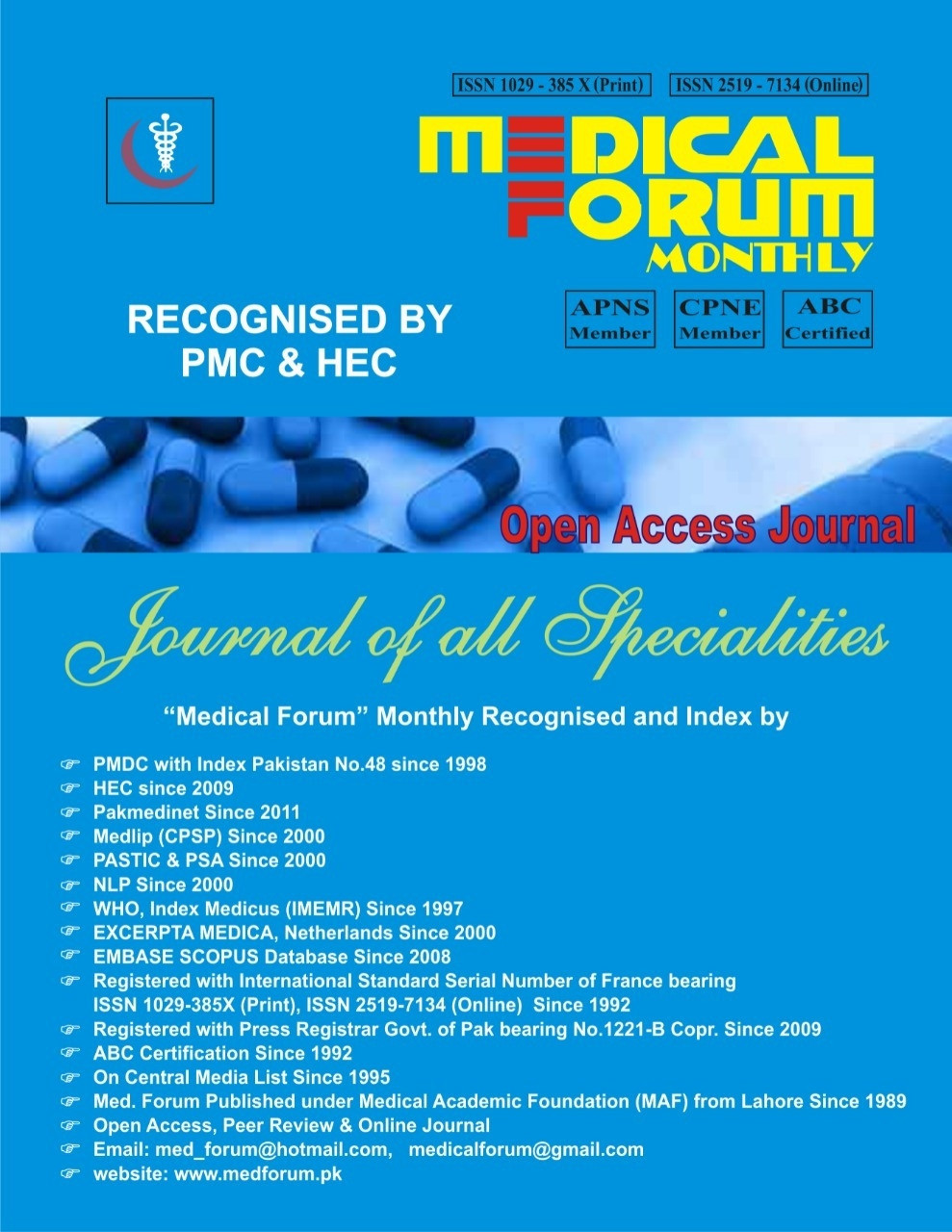
2. A Pattern of Drug Resistance of Salmonella in Patients having Suspected or Confirmed Typhoid Fever in District Bannu and Adjacent Areas
Raza Muhammad Khan, Nafidullah Khan and Tahir Ullah
ABSTRACT
Objective: To determine the drug resistance pattern of salmonella in patients with suspected or confirmed typhoid fever in District Bannu and adjacent areas.
Study Design: Descriptive case series study
Place and Duration of Study: This study was conducted at the DHQ Teaching Hospital (DHDTH) in Bannu, Khyber Pakhtunkhwa, from July 2022 and ending in December 2022.
Methods: The research included 55 individuals who were either diagnosed with typhoid fever or were suspected of having it (according to the case criteria) and brought to the Department of Medicine at DHQ Teaching Hospital (DHDTH) Bannu in Khyber Pakhtunkhwa. Their blood samples were collected for Blood Culture Sensitivity per standard protocols. They were sent to the laboratory (Shifa International Hospital Ltd Islamabad) to see the pattern of salmonella drug resistance.
Results: In Pakistan, typhoid fever is a common occurrence. Treatment of Salmonella typhimurium has become more difficult due to the rise of the disease's multidrug and extensively drug-resistant strains. This research aimed to identify medication resistance patterns among salmonella species in our area so that doctors can better treat typhoid in this day and age of widespread antibiotic resistance. In all, 55 individuals volunteered to have their blood samples taken and analyzed for C/S results. There were 50 positive results and 5 negative (no growth) for isolation. In these 50 cases, 9 samples revealed growths Other than salmonella (like pseudomonas aeruginosa, E.coli-MDR, group B strep, klebsiella pneum, and even MRSA in 2 samples), while Salmonella typhi were isolated in 41 blood samples.
Conclusion: Out of these 41, only 6 samples (14.63% ) showed Non-resistant salmonella typhi (sensitive to 1st line drugs and 3rd generation cephalosporins, while intermediate sensitivity to 2nd line drugs), and 28 samples (68.29%) showed growth of Extended Spectrum Beta-Lactamase positive (ESBL) salmonella typhi (resistant to third generation cephalosporins), but early results also showed resistance to 1st line and 2nd ine drugs, while 7 samples (17.07%) showed samonella typhi XDR (resistant to 1st line, 2nd line drugs and 3rd generation cephalosporins, BUT sensitive to Azithromycin/Carbapenems). Our results revealed that drug-resistant salmonella (ESBL/XDR) is a big and hidden health challenge in our set up that needs proper attention from healthcare professionals and the Government.
Key Words: Drugs Resistance, Salmonella, Typhoid Fever, District Bannu.
